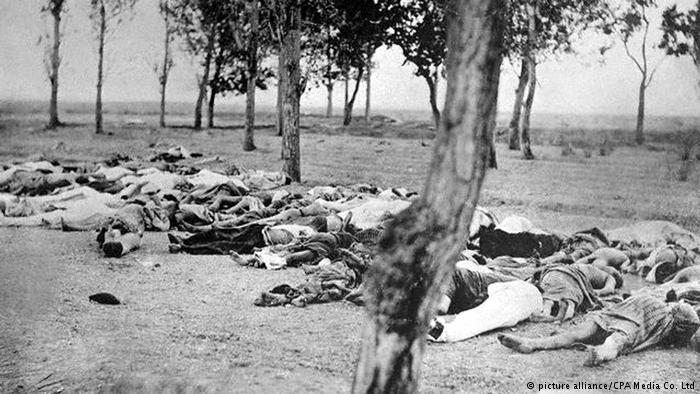
The Dutch parliament has voted to recognize the deaths of Armenians during World War I as genocide. The decision is likely to enrage Turkey amid already strained relations with the Netherlands.
The Dutch parliament has overwhelmingly voted to recognize the World War I massacre of Armenians as genocide, in a vote that will likely stoke further tensions with Turkey.
Dutch lawmakers voted 142 to 3 “that parliament in no uncertain terms speak about the Armenian genocide.” It also voted to send a cabinet representative to Armenia in April for the commemorations of the killings.
Armenia has long sought to gain international genocide recognition for what it estimates to be 1.5 million Armenian deaths in the Ottoman Empire between 1915 and 1917.
As the successor state to the Ottoman Empire, Turkey denies that the World War I-era deaths amounted to genocide and has lashed out at countries that have officially recognized the term.
Tense Turkish-Dutch relations
Relations between the two NATO allies have been tense since March 2017 when Turkish politicians were blocked from campaigning in the Netherlands for a referendum expanding President Recep Tayyip Erdogan’s powers.
Earlier this month, the Netherlands officially withdrew its ambassador from Turkey and said it would not allow a new Turkish ambassador to take up a position in the The Hague. The move was made in response to Turkey not recognizing the Dutch ambassador as part of the fallout from the dispute over the referendum campaigning.
For years, the Dutch government has referred to the “question of the Armenian genocide,” a vague wording that left it up to debate.
Acting Dutch Foreign Minister sought to downplay the parliament’s vote and stick with traditional policy.
He said the government would not formally recognize the parliament’s decision
“We’ll pay our respects to the victims and relatives of all massacres of minorities,” Kaag said, adding that the government would show “restraint.”
“The cabinet will therefore not follow the House in this matter,” said Kaag.
The genocide proposal was put forward by the conservative Christian Union (CU) party, a junior coalition partner in Prime Minister Mark Rutte’s four-party coalition government.
The Turkish Foreign Ministry “condemned” the Dutch parliament’s decision, saying a country that looked on during the Srebrenica massacre of Muslims in Bosnia had no place passing judgments. Dutch UN peacekeepers were on the scene in Srebrenica in 1995.
It “noted” that the Dutch government would not abide by the parliament’s decision.
An ‘event,’ or a ‘genocide’ in 1915?
Nearly 30 countries have formally recognized the massacres as genocide.
Germany passed an Armenian genocide resolution last year. The decision triggered the start of a crisis in relations, including Turkey blocking German parliament members from visiting troops station at a Turkish airbase.
When France formally passed a genocide resolution in 2011, Turkey temporarily recalled its ambassador; it did the same thing to Austria in 2016.
Turkey refers to the Armenian massacre as the “Events of 1915.” Ankara puts the number of Armenian deaths at 500,000 and points out that hundreds of thousands of Muslims died from combat, starvation, cold and disease in eastern Anatolia during the war.
The official line is that ethnic Armenians represented a fifth column backed by Russia during World War I, and that the mass deportation and accompanying Armenian deaths were neither premeditated nor intentional — a key requirement in the legal definition of genocide.
Armenians have documented systematic mass murder, organized banditry, raping of women, pillaging of property, forced deportation and other atrocities. Thousands of Armenians, especially women, are believed to have been taken as slaves or brides and forced to convert to Islam.
Hundreds of thousands of Assyrian Christians were also killed or uprooted in the dying days of the Ottoman Empire, in what many historians consider to be part of the same policy.




